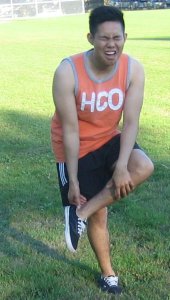Morton’s neuroma is an abnormal thickening of the nerve tissue found between the third and the fourth toes. There is a feeling as if standing on a pebble in the shoe or on a fold in the sock. Bunions, flat feet, tight shoes and hammertoes cause this condition. A person suffering from Morton’s neuroma experiences toe cramping, tingling sensations, sharp and shooting foot pain and becomes severe over time.
You can enroll in a first aid class so that you can properly manage the symptoms of this condition.
Symptoms of Morton’s neuroma
- Experiencing burning pain in the balls of the foot that spreads into the toes.
- There is a feeling as if standing on a pebble in the shoe
- A tingling sensation or numbness can be felt in the toes.
There are factors that can cause Morton’s neuroma like wearing high-heeled shoes or shoes that are ill-fitting can give extra pressure on the toes and ball of the foot. Doing high-impact activities like jogging or running can cause the feet repetitive trauma and also wearing tight shoes used in snow skiing or climbing rocks can put pressure on the foot. People who have hammertoes, high arch or flat feet and bunions have high risk of developing a Morton’s neuroma.
Treatment and home remedies
- Take over-the-counter nonsteroidal anti-inflammatory medicine in order to reduce the swelling, inflammation and pain caused by Morton’s neuroma.
- Put cold water on a paper cup and freeze it overnight, then the next day tear off the cup and use the ice to massage the bottom portion of the foot, to make the affected nerves numb, and minimize the symptoms.
- The person should avoid wearing shoes that cause compression of the third and fourth toes. Wear shoes with a broad toe box that has an extra depth
- Minimize doing activities like jogging, aerobic exercises or dancing that puts the feet under high impact.
Other treatments and exercises

- A non-surgical treatment like cortisone shots and prescriptions for anti-inflammatory drugs.
- Some exercises like pounding of the feet can help minimize the pain and also swimming or rowing exercises makes a good workout and do some weight machines that are good for the upper body. Avoid exercises like jumping, running, brisk walking or dancing and wear comfortable and non-binding shoes.
- Treat the foot exercises for relieving pain like soaking the foot in hot water, then after soaking, flex and stretch the toes. During the day, massage the ball of the foot for several minutes until the pain is minimized. Do some stretching exercises before other types of exercises in order to help prepare the foot for the pounding.
- Keep the foot elevated in order to minimize the pain. Do some exercises that stretch the toe while the foot is propped on a cushion or pillow. If these treatment options could not effectively relieve the pain, seek medical help.
